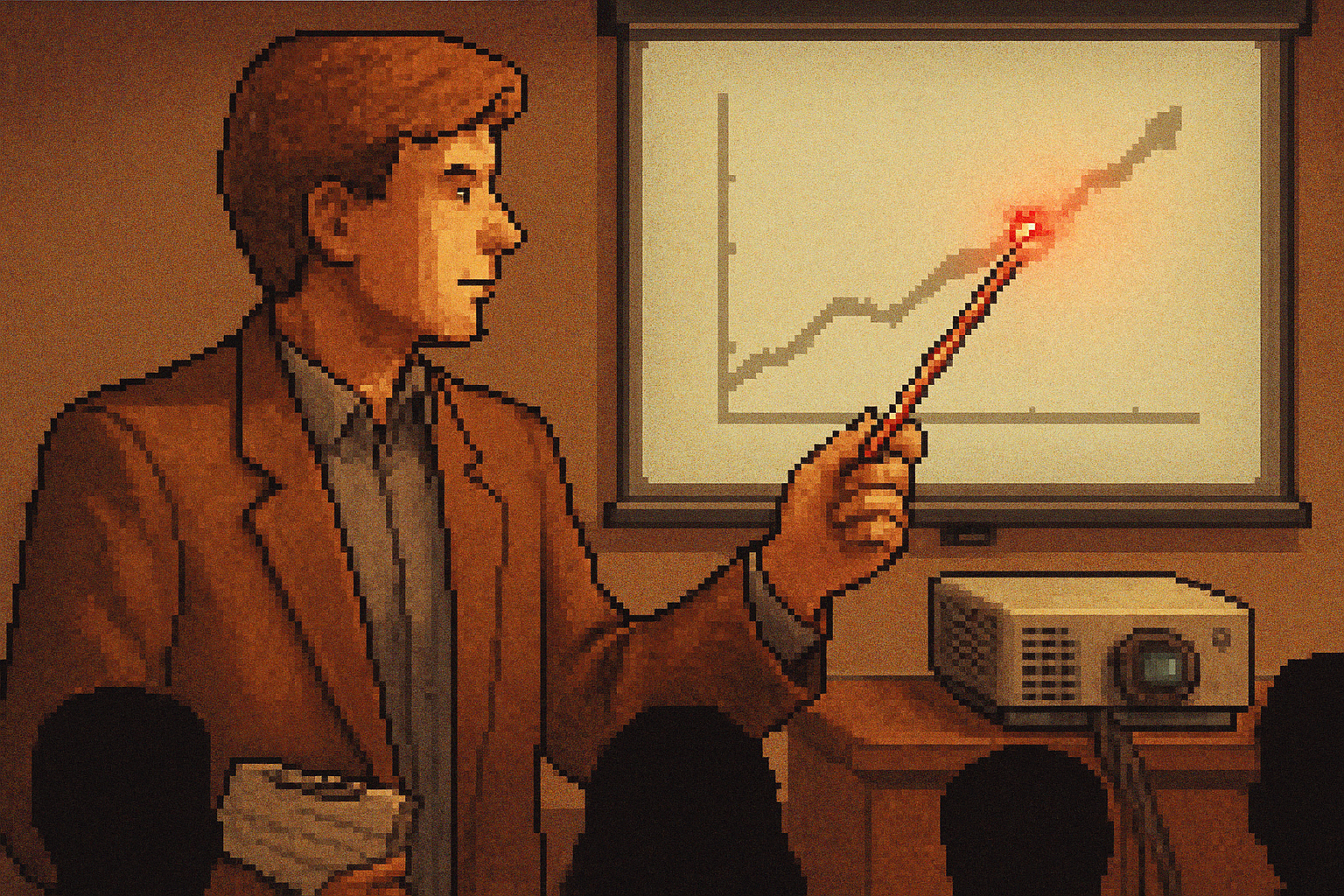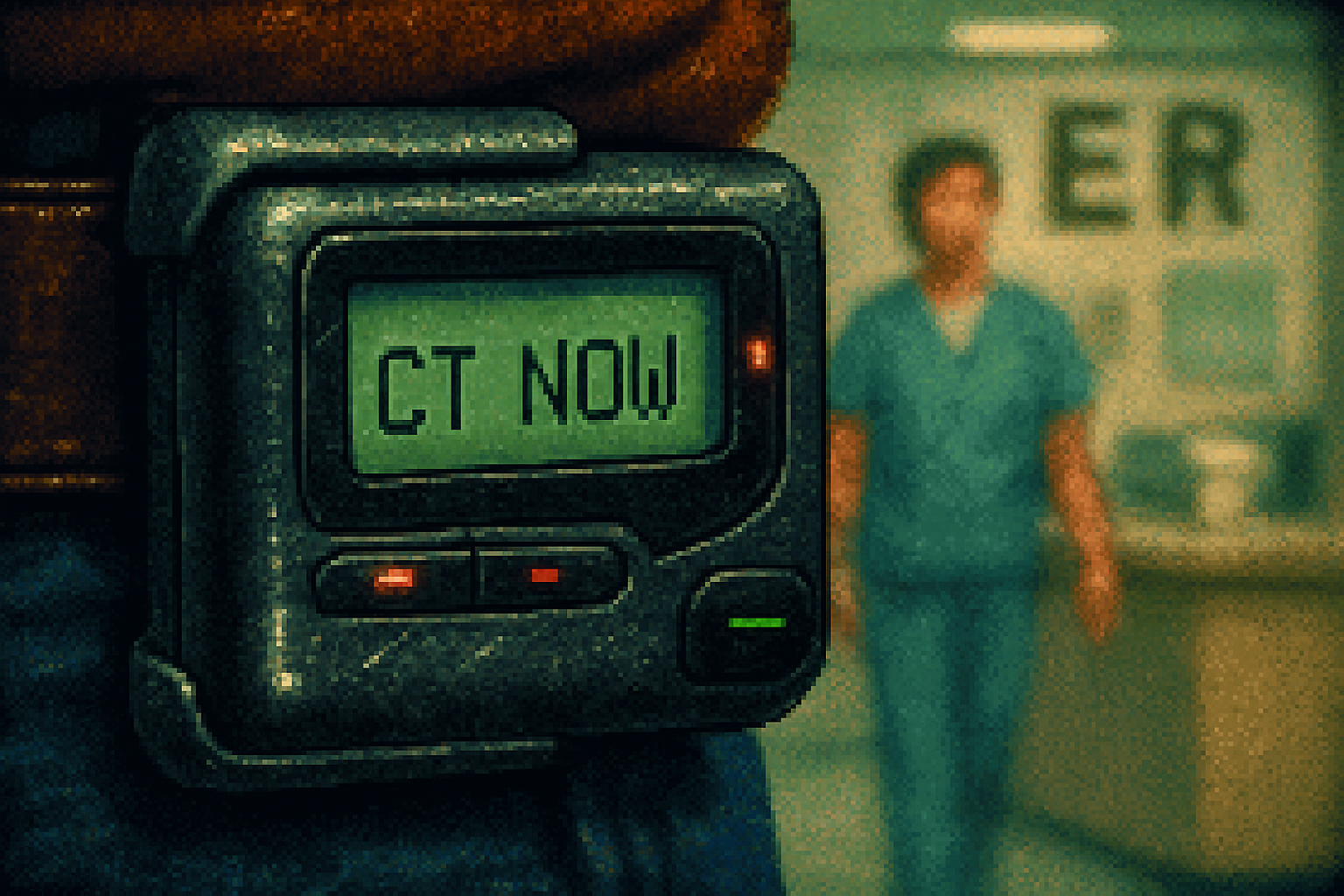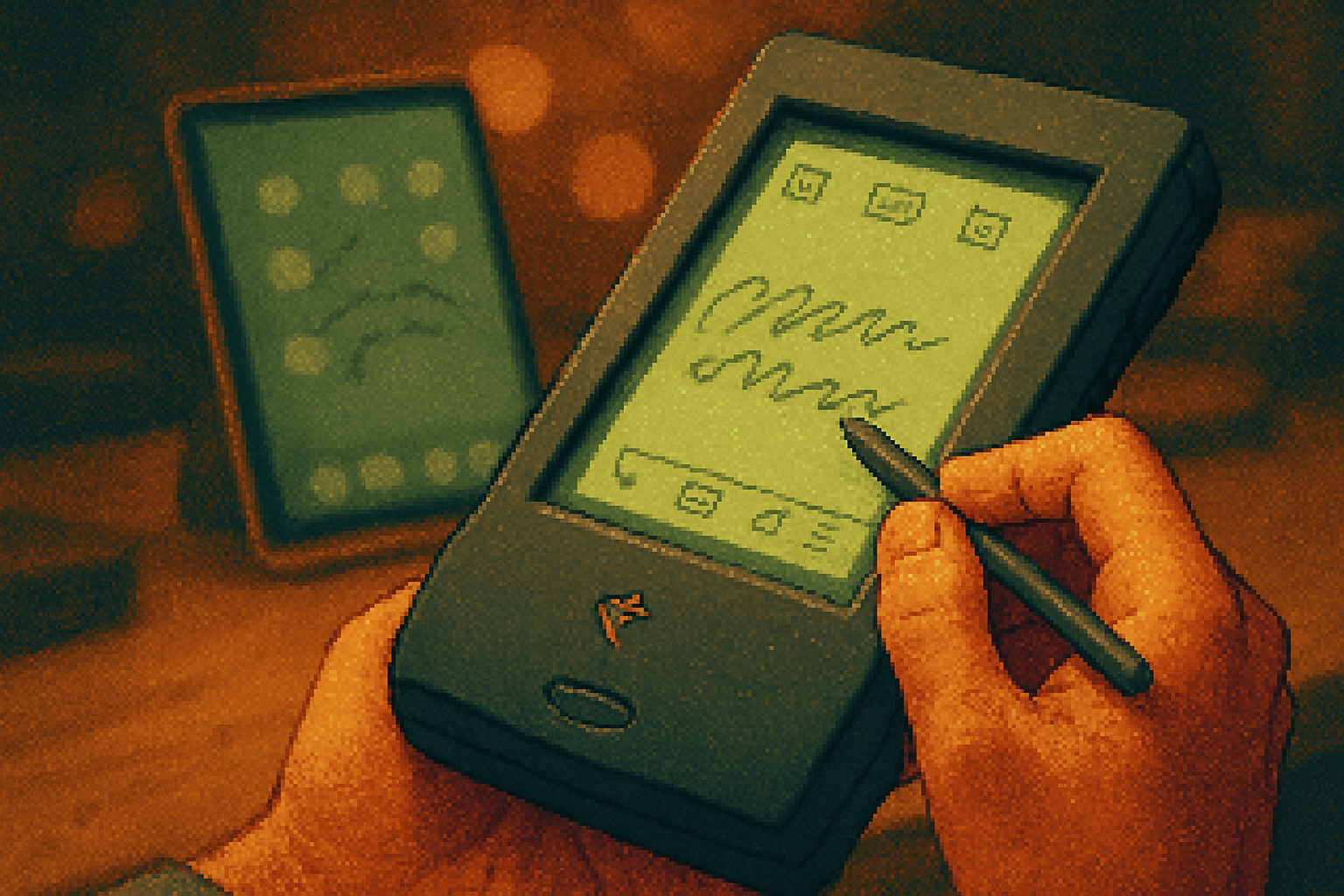· culture · 7 min read
The Bright Beginnings: How First Models of Laser Pointers Changed Presentation Culture Forever
A nostalgic look at how the earliest consumer laser pointers - the small red beams that proliferated in the 1990s - reshaped classroom and boardroom presentation habits, aesthetics, and etiquette, and how those tiny devices sped the rise of the slide-driven talk.

A small dot that made a big difference
There are images that instantly transport a certain generation back to the front of classrooms and conference rooms: the warm hum of a CRT projector, a presenter in a blazer, and a tiny, incandescent red dot tracing across a slide. Those modest red laser pointers - slender, metallic, sometimes keychain-sized - arrived at a precise cultural moment and quietly rewired how information was shown, taught and sold.
This essay traces how the first consumer models of laser pointers entered everyday life in the 1990s and why they mattered beyond the novelty: they changed posture and performance, altered pedagogy, and became a token of presentation literacy.
The technology in plain language
Laser pointers are simple in concept: a focused, visible beam of light produced by a laser diode or more complex system. Early consumer pointers descended from decades of laser research - from laboratory gas lasers to compact semiconductor diode lasers - but it was the maturation and cost-reduction of red diode lasers that made handheld pointers affordable and ubiquitous.
- Early visible pointers typically used low-power red laser diodes. These devices produced a sharp, highly visible dot on projection screens and chalkboards without the bulk or heat of early lab equipment.
- More sophisticated (and later) green pointers used frequency-doubled diode-pumped solid-state systems and appeared in the 2000s, delivering greater visibility but also new regulatory scrutiny.
For a simple primer on the device and its basic operation, see the overview at Wikipedia: https://en.wikipedia.org/wiki/Laser_pointer. For how the consumer laser pieces fit together technically, see HowStuffWorks’ explanation: https://electronics.howstuffworks.com/laser-pointer.htm.
A cultural and technological convergence: why the 1990s mattered
Two threads converged in the 1990s to make the laser pointer indispensable:
- The consumerization of laser diodes - manufacturing improvements brought down costs and allowed compact, battery-powered pen-like models to be produced cheaply.
- The rise of slideware and laptops in meetings and classrooms - Microsoft PowerPoint (and other presentation tools) were already spreading through businesses and schools, and projectors connected to laptops became common practice.
PowerPoint had been around since the late 1980s, but the 1990s was when slide-driven talks became routine in office culture and in higher education. The laser pointer paired perfectly with this - instead of awkwardly pointing with a finger or a long stick, presenters could precisely indicate a word, a chart node or a tiny data point from several meters away.
See background on slideware: https://en.wikipedia.org/wiki/Microsoft_PowerPoint.
How the object changed behavior: performance, pedagogy, and power dynamics
The earliest pointers were more than precision devices; they altered the stagecraft of presenting:
- Performative economy - the presenter could move freely, walk away from the lectern, and still draw attention to specific screen elements. The pointer empowered the presenter to choreograph attention.
- Focus and clarity - complex graphs and dense text could be navigated in real time - instructors could follow a line on an x–y plot, and managers could highlight small numbers in financial tables.
- Authority and ritual - holding the pointer became an emblem of command. In classrooms and meeting rooms, it functioned like a baton; whoever wielded it signaled control of the narrative.
At the same time, the convenience of the pointer fed a particular evolution in pedagogy and presentation style. Slides became a central artifact of communication: presenters could rely on visual structure and on-the-fly highlighting instead of distributing printed handouts or writing live on blackboards.
This interdependence between slideware and laser pointers also had critics. Edward Tufte famously criticized the slide-driven culture in The Cognitive Style of PowerPoint - noting that formats encouraging bullet lists and terse slides could degrade substantive explanation and analytical rigor (see: https://www.edwardtufte.com/tufte/powerpoint).
Design and ritual: the tactile and aesthetic memory of the ’90s pointer
Part of the nostalgia lies in the object itself. Early consumer pointers often shared a few tactile signatures:
- A cool metal or brushed-aluminum barrel that fit into the palm.
- A satisfying click or soft rubber button that felt like a secret trigger.
- The faint smell of warmed batteries after long sessions.
- Buttons for on/off only - no slide controls yet; those would come later in the 2000s as separate presentation “clickers”.
These devices were portable in a way that older pointing technologies were not. Teachers kept them in desk drawers; salespeople stashed them in briefcases. There is a generation of presenters for whom a laser pointer was the first small piece of professional tech that felt both powerful and personal.
For the technology that integrated slide advancement (the presentation clicker), see: https://en.wikipedia.org/wiki/Presentation_clicker.
The ripple effects: more than precision - new norms, new problems
The laser pointer enabled improvements in clarity, but it also introduced new norms and later, challenges:
- Increased pace - presenters often zipped through slides faster, relying on the pointer to keep audiences oriented. That sped up delivery but sometimes sacrificed depth.
- Audience expectations - audiences began to expect visual clarity and the polished choreography that a skilled pointer could provide.
- Distraction and misuse - the pointer’s novelty could distract when overused - presenters chasing the dot, or audience members dazzled by constant movement.
- Safety and regulation - as more powerful models (especially green lasers) appeared, regulators issued guidance. The U.S. Food and Drug Administration maintains information and warnings about laser pointers and hazards to eyes:
From luxury prop to everyday tool - and then to integrated remotes
By the late 1990s and early 2000s, laser pointers shifted from novelty to standard-issue. At first, pointers were independent of the slide-advancement hardware; presenters still had to walk back to the computer or hand control to an assistant to change slides.
The next evolutionary step was integrating remote slide controls - the combination of laser pointer and clicker that allowed a single device to advance slides, blackout the screen, and point - an ergonomic unification that completed the presenter’s toolkit.
This convergence echoes a common pattern in technology: first a specialized object addresses one clear need (pointing), later that object is folded into broader, multifunctional tools.
Why we remember them fondly (even if we roll our eyes)
Nostalgia is rarely about the object alone; it’s about the whole setting. The red laser dot evokes a moment in time:
- The ritual of class presentations and early college seminars.
- The first time you used a projector and felt like a professional.
- The awkward, earnest student pointing at a graph while classmates shuffled notes.
There’s also a tactile memory - the weight of the pointer, the click of the button - that digital touchscreens and integrated remotes don’t quite replicate.
Legacy: small devices, lasting cultural traces
The first consumer laser pointers did more than add convenience. They reshaped expectations about how to deliver information effectively. They made precise visual emphasis possible at scale, and they fed into a broader shift toward slide-centered communication. They are part of the reason we associate ideas like “presentation skill” with movement, voice modulation, and the ability to guide visual attention.
At the same time, their rise prompts useful reflection: tools shape thinking. When our communication tools favor quick, visual signposting, our practices adapt to them - for better and worse.
Closing frame
The slender laser pointer of the 1990s was modest in silicon and metal, but it rewired rooms. It moved authority from chalkboard to screen, made presenters more mobile, and contributed to the rise of modern slide culture. For anyone who remembers that tiny red dot, the memory is both practical and ceremonial: a reminder of a time when a small beam could make you feel like you were onstage.
References
- “Laser pointer” - Wikipedia: https://en.wikipedia.org/wiki/Laser_pointer
- How laser pointers work - HowStuffWorks: https://electronics.howstuffworks.com/laser-pointer.htm
- “Microsoft PowerPoint” - Wikipedia: https://en.wikipedia.org/wiki/Microsoft_PowerPoint
- Edward Tufte, “The Cognitive Style of PowerPoint”: https://www.edwardtufte.com/tufte/powerpoint
- U.S. Food & Drug Administration - Laser Pointers: https://www.fda.gov/radiation-emitting-products/laser-products/laser-pointers
- “Presentation clicker” - Wikipedia: https://en.wikipedia.org/wiki/Presentation_clicker



